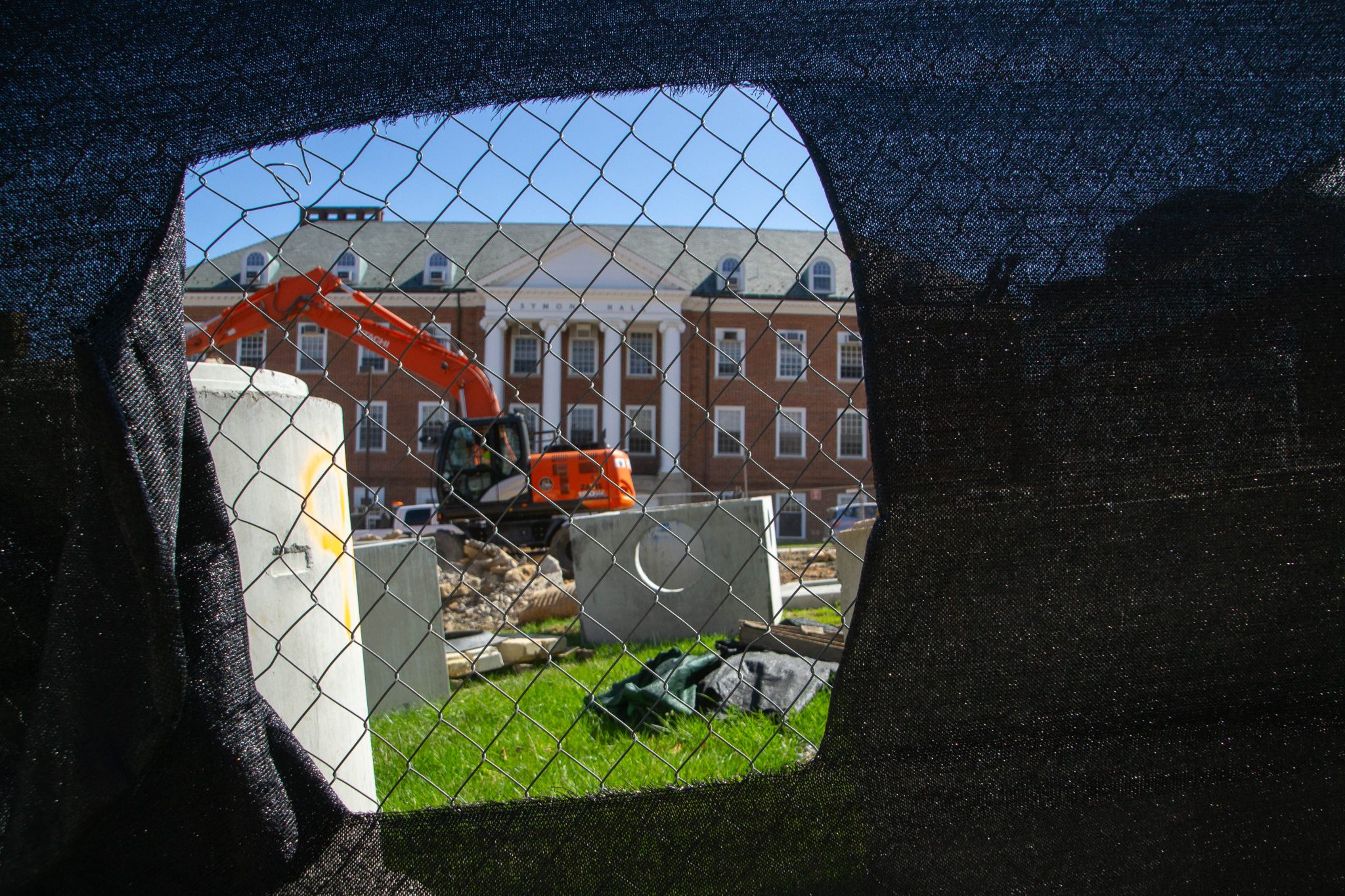Views expressed in opinion columns are the author’s own.
College Park? More like construction park. But it’s construction for a rail line that will make many lives easier through more efficient transportation.
As a freshman undecided engineering major leaning toward a career in civil engineering, I become more motivated to finish my courses every time I walk past construction for the Purple Line. I dream of being part of a project like this one day. I’m sure I’m not the only engineering student who aspires to be involved in impactful projects that will improve many lives.
To help us achieve these goals, the University of Maryland should partner with the Maryland Department of Transportation, which owns the Purple Line project, to create internship opportunities for students to work on the Purple Line.
Any university’s biggest goal is to give the best education possible to its students. An engineer’s job is comprised of a lot of problem solving. Our classes teach us how to approach problems we unexpectedly face. And the most efficient way of learning how to create solutions to problems is through experience we can get through the Purple Line. Real world applications such as internships allow us to practice the problem solving frameworks our classes teach. Students would also be able to see typical challenges that arise in real engineering projects.
Due to this university’s location, students have the opportunity to apply for internships in the Washington, D.C., area, but students who don’t have a reliable mode of transportation might not be able to take advantage of this.
Additionally, many students at this university, like me, have to work. These obligations shouldn’t stop students from using an opportunity to learn and practice our problem solving skills in an internship. This university should consider those who might struggle to complete an internship for these reasons.
Not only is this work on the Purple Line a fairly unique opportunity — there are not many cities in the United States with robust public transportation systems and the Washington, D.C., Metro has been considered one of the best in the nation — but a significant chunk of the Purple Line goes straight through the campus.
This is why the Purple Line’s location is almost too good to be true. We would be missing out if students didn’t gain the benefit of the Purple Line during its construction period.
This university would also benefit greatly from providing its students with an opportunity to intern with MDOT. It is no secret successful alumni help universities gain recognition and sometimes donate generously to their alma mater. This university should do everything in its power to help its students have an easier time securing jobs and gaining the tangible skills internships often provide.
This university already has an amazing engineering school. According to U.S. News rankings, this university is tied with Harvard University for the 21st best engineering school in the country, beating other prestigious schools such as Duke and Yale. But considering that the engineering school states its intentions to “foster a close partnership with industry and government” in its mission statement, this university should take measures to continue advancing in both its rankings and community relations. Creating an internship opportunity like this is the way to do it.
An internship program already exists, but it is very difficult to find and secure for the average student. While working with the Engineer Career Services could help students find this internship, it should not be this difficult; they should be more accessible to students in the engineering school, and perhaps even the entire student body. This university should take a more active role in removing barriers students face when trying to secure internships — such as transportation — to truly have these opportunities come to fruition for students. However, relying on internships buried in the Career Services website will keep them from students, especially freshmen who are still trying to navigate college life and breaking into the professional scene, like myself.
Through this internship, civil engineers would be able to learn more about the structural design of the Purple Line and learn more about designing large infrastructure projects. Mechanical engineers would be able to learn more about the train control systems.
The benefits of this kind of internship opportunity are not limited to engineering majors. Business majors could learn more about how to manage the bureaucratic side of a project. In addition, accounting majors could learn how to budget for a big project.
Construction for the Purple Line consistently disrupts on-campus life by blocking off routes to class. As such, this university is obligated to give its students some kind of benefit from this project. Giving students an opportunity to intern on the Purple Line project would help them gain a stronger skillset.
An internship on the Purple Line could also help students gain connections in the professional world. Those who do internships are training for jobs at MDOT. Given that they have proven their ability and are able to return to work after graduation for MDOT, they could be incredible assets for the department. If not, skills gained could set them apart from other applicants.
The biggest priority of any school should be making sure its students are given every resource and opportunity to be as ready as possible for their careers. For engineering students, the best and most efficient way to do that is providing as many chances as possible to understand what engineers really do and become more comfortable with adapting to problems in real time. With the Purple Line project happening right in the heart of the campus, there is no reason why this university shouldn’t be working with MDOT to create these internship opportunities for its students.
Medhanit Desta is a freshman undecided engineering major. She can be reached at mdesta@terpmail.umd.edu.



